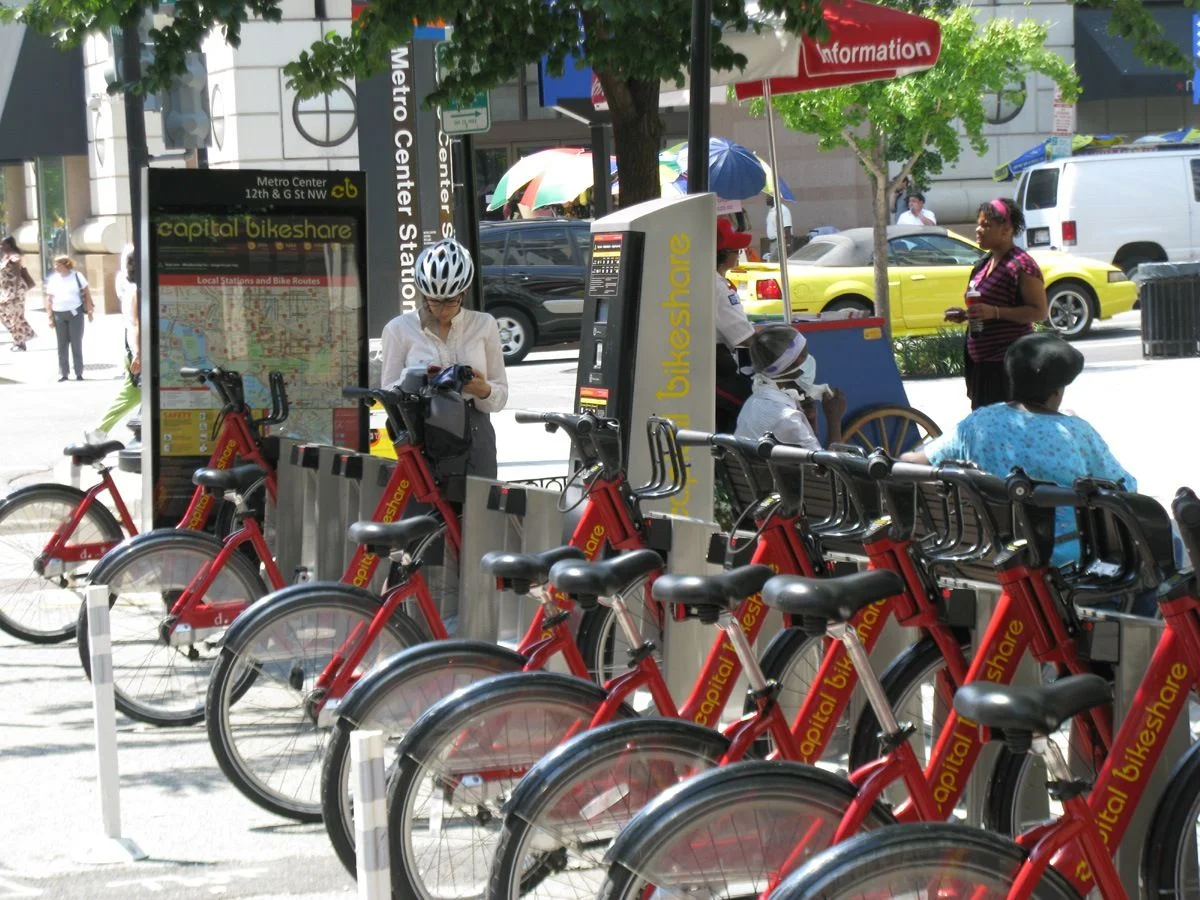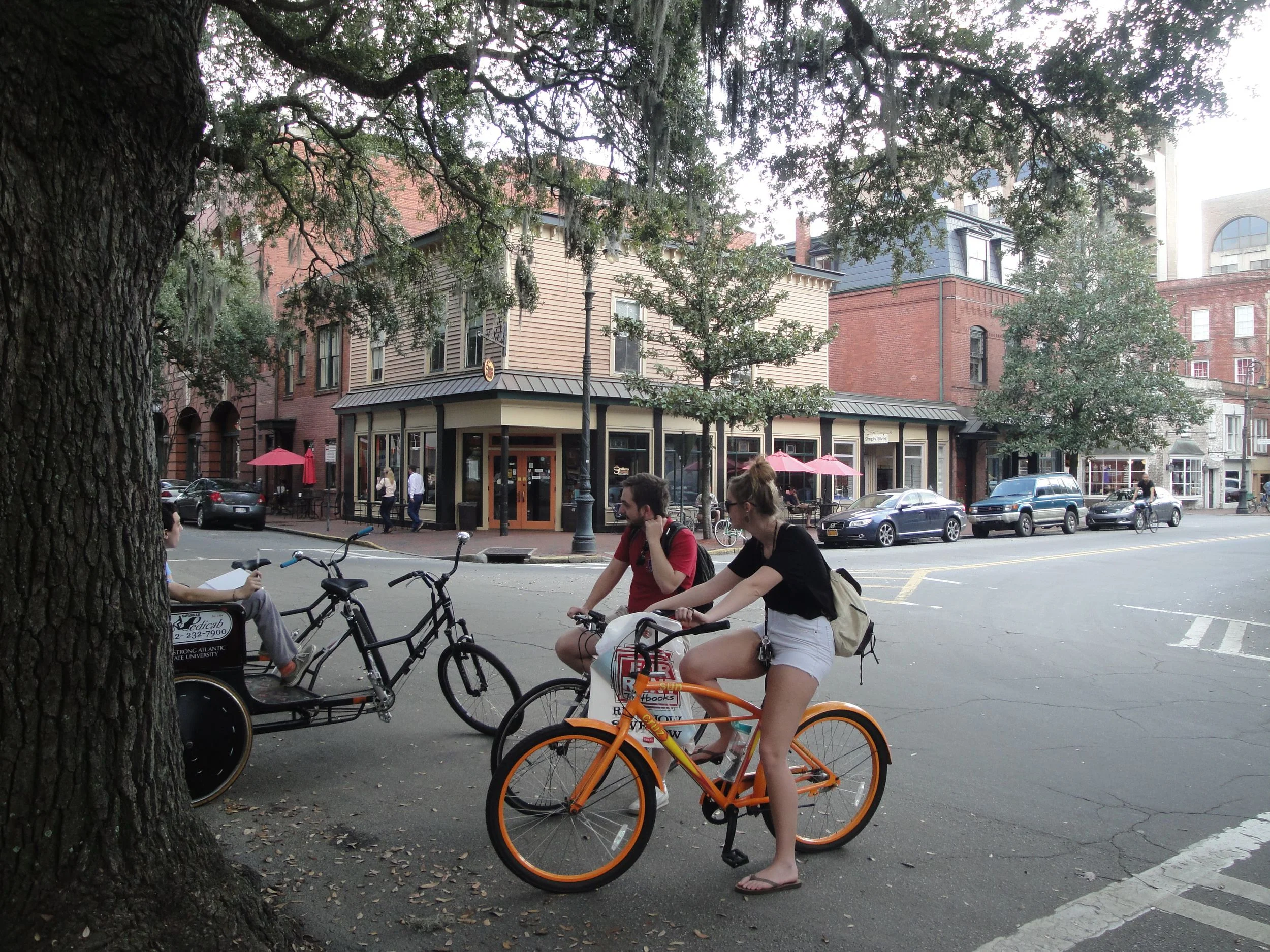The joyful combination of walking and biking
I've been spending a great deal of time over the last several months writing and editing a book about living in a walkable community. Titled "Why I Walk", the book is largely a personal account, as opposed to a technical review of the benefits of living this way. The book will be published this year, and I will certainly provide updates as it gets closer to release. In the meantime, I thought I'd share a sample, so readers can get an idea of the flavor. The book is divided into four primary chapters, with a series of sections supporting each chapter. This particular section is part of a chapter devoted to the freedom that comes with having options. In particular, this deals with how well biking and walking work well together.
The book itself will be rich with illustrations and photographs, which is hard to capture in a blog post. But this should give you a flavor of where it's headed. Enjoy!
If I want to extend my reach, it’s easy to hop on a bike to get farther.
When I was a kid in Albert Lea, Minnesota, the bike was my primary means of getting around – once I was too big for a Big Wheel, that is. I loved getting on my bike and riding to friends’ houses, parks, lakes and more. I was fortunate that I lived in a small town where biking like this was easy and safe, and where there was a large network of bike trails and bike routes.
As an adult, I still enjoy biking. My bike now is considerably more expensive and fancy, but it serves the same purpose – it further enhances and facilitates my experience of getting around without a car. And, not to put to fine a point on it, but biking in a bike-friendly city is a lot more fun than driving.
I like to be as honest with others and myself about my experiences of being deliberately less car-dependent as possible. I do love to walk, and I can often walk to quite a few daily destinations. But let’s face it – some places are quite far away, some days I just don’t feel like it, and some days the weather isn’t great. On occasion, I’ll hop in my car to take care of what I need to. But at other times the bike is great for getting somewhere a lot faster than I can on foot.
The places that I most often go on a daily basis are generally within about a mile of where I live. With a bike, it’s very easy to stretch that to two, three or even five miles.
For years, we’ve neglected the reality of biking as a viable transportation method. While many European nations have taken great strides to make biking comfortable and an option for everyone, we’ve tended to accommodate only the most avid cyclists. You’ve seen them, right? Wearing brightly colored, tight-fitting (sometimes too tight) clothes, the true warriors on bikes will ride anywhere, in any kind of condition. They spend a lot of money and time on the bike, doing routine rides of fifty or one hundred miles.
Good for them. But that’s not where I live, and that’s not me.
And, frankly, it’s only a very small percentage of the U.S. population. Cycling consultants I work with tell me only one to three percent of the public are avid cyclists. Most of us fall in the large category of “interested, but concerned.” By that I mean, we are interested in the idea of biking more, but concerned about safety, cost, road conditions, locking the bike and more.
The good news is that our cities and towns are getting better at addressing these concerns. Programs such as bike sharing are on the rise, which make it easy to ride even if you don’t own a bike. Physical improvements like cycle tracks and off-street bike paths are going well beyond the sad-looking bike lanes that were the first-generation efforts to accommodate cyclists. More cities are adding bike parking areas and bike racks that make it harder to steal a bike.
Like many of the subjects addressed in this book, the world of biking is looking brighter as more and more of the population is increasingly being considered by our municipalities. For me, biking is just one more great way to explore my world, get to where I need to go, and save a few bucks in the process by not driving. I’d also mention the exercise benefits, but that’s for a later chapter. One of the best parts is that all those years of riding a bike as a kid have not gone to waste. It really is easy to pick it up again and remember the fun you had from long-gone days.
If you got value from this post, please consider the following:
- Sign up for my email list
- Like The Messy City Facebook Page
- Follow me on Twitter
- Invite or refer me to come speak
- Check out my urban design services page
- Tell a friend or colleague about this site






